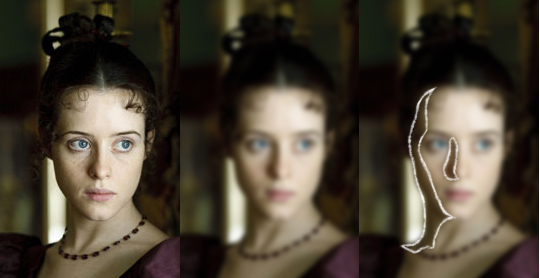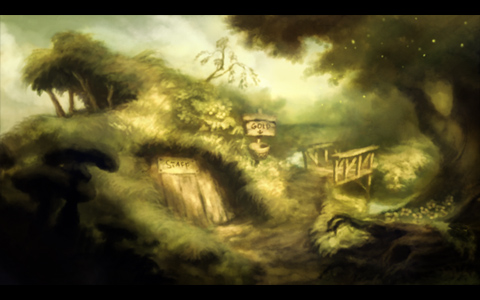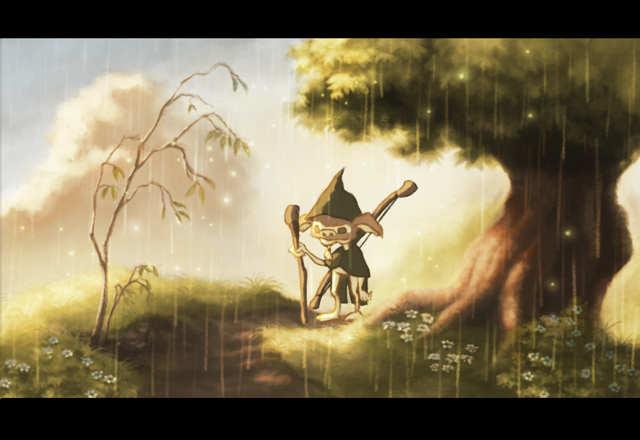A common tip when dealing with values from a reference is to squint your eyes, which enables you to look past distracting details and get a good general impression of the value distribution.
Values don't only convey the form and material of the object, but also set the overall mood to a great extent, so it's a very delicate affair, that is easily messed up.
Like with everything else, it's usually good to start with the big picture, and work down to details. Blurring the image, equivalent of squinting your eyes, shows that due to a strong light source on the right, and a non-glossy skin, you find the main value difference on the left of her face, where the head is in shadow from the light source.

This is usually the case, unless you have very shiny objects, so it's good to remember, as people tend to instead focus and exaggerate minute highlights/shadow lines, which create weird and often mildly freakish results.
So by observing the object in this manner, you can begin with the vital areas, and work your way down to the details, confident that it'll probably turn out fine in the end, or at least that you've used a method that gives you a good chance at it.
Values don't only convey the form and material of the object, but also set the overall mood to a great extent, so it's a very delicate affair, that is easily messed up.
Like with everything else, it's usually good to start with the big picture, and work down to details. Blurring the image, equivalent of squinting your eyes, shows that due to a strong light source on the right, and a non-glossy skin, you find the main value difference on the left of her face, where the head is in shadow from the light source.

This is usually the case, unless you have very shiny objects, so it's good to remember, as people tend to instead focus and exaggerate minute highlights/shadow lines, which create weird and often mildly freakish results.
So by observing the object in this manner, you can begin with the vital areas, and work your way down to the details, confident that it'll probably turn out fine in the end, or at least that you've used a method that gives you a good chance at it.













